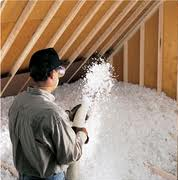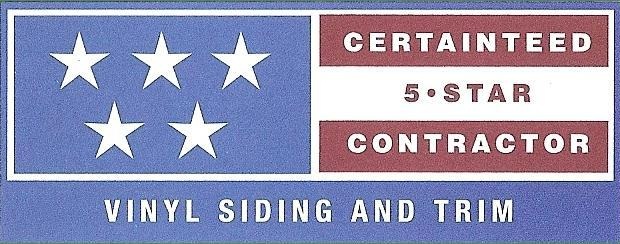
|
Phone: (800)497-9011


|
Blown-in Cellulose Insulation MI

Building in popularity over the last 30 years, is blown-in cellulose insulation. This insulation is made from old ground-up newspapers, rags and cardboard and then mixed with borate based fire retardants. It is an inexpensive material with a highly recycled content, that requires little energy embodiment to manufacture, making it a favorite among those that favor greener then already green products.
Adding water spray to the cellulose as it flows from the dispensing hose is a method used which has gained popularity over the years. This method is used to fill wall studs during new construction. Another method for insulating roof rafters, although not as popular, is spraying cellulose in-behind the netting that is stapled to the bottom of the rafters. Afterwards, the packed cellulose is covered with drywall securing it in place for life.
Improved manufacturing methods have changed the look, feel and improved performance of cellulose insulation. The old hammer mill processes made the cellulose look like paper that had gone through the office shredder. The new milling process called "fiberizing" thoroughly pulverizes the recycled materials into bits of fibers that improve its insulating performance.
Denser then fiberglass, cellulose has a slight advantage, particularly if filling closed wall cavities, being that it`s more effective at reducing air flow. The R-value of loose-fill cellulose for attics is about 3.1 per inch and a settled density of about 2.3 lb. per inch under its own weight. Dense packing cellulose is good up to a point of about 4lbs. per inch then the R-value reverses and begins to decline.
The settling phenomenon with cellulose is well known by manufacturers, they print tables on product bags showing the initial thickness at which attic insulation should be installed to achieve a given settled thickness. If the contractor fails to understand or does not take into account for settling the accepted R-value and related performance will not be reached.
Get it done right:
Choosing the right insulation for a particular need is only half the battle when it comes to insulating a home or office. Blowing a bunch of insulation into the attic without taking into account proper preparation can be more harmful then helpful. Having an understanding of R-value, air flow and moisture control is critical to achieving desired results.
R-value:
The R-value is a measure of thermal resistance used in the building and construction industry. It is used to compare unit values of any particular building material, particularly the different types of insulation that can be used; however, beware such insulation materials are tested in a controlled environment without air flow or moisture that is commonly found in attics of residential homes. Controlling air flow and moisture in the attic is highly important to achieve the R-value performance indicated by product labeling.
Attic Ventilation:
To simply follow good construction techniques or comply with the many building code requirements across the country, the rafter cavity between the roof deck and the insulation must be ventilated. The building code for Lower Michigan, upper Ohio and upper Indiana requires 1 square foot of vent area for every 150 square feet of attic floor area. If 50 percent of the vent area is near the ridge and the remainder is at the eave, the ratio is reduced to 1 square foot of vent area for every 300 square feet of attic floor area. However, with our field experience with ice damming on roofs, we highly recommend that building codes are used as the minimum and we strongly suggest having 100% of vent at the eaves and equal that amount at the ridge.
Attic Moisture:
To meet building code requirements in almost all areas of the country, and again simply to follow good construction technique, vapor retarders should be used where walls, floors or ceilings meet with the exterior of the building envelope. Loose-fill cellulose has no vapor retarders and if it is intended to be used exclusively, an independent installed vapor retarder will be necessary. The idea is to keep the insulation as dry as possible, because moisture ridden insulation loses R-value rapidly, and of course the ability to insulate.
Fire Resistance:
Cellulose insulation is made primarily from recycled paper, rags and cardboard, all materials that are inherently combustible. Therefore, it is a must that cellulose be manufactured with entrained fire retardant chemicals; usually borate-based chemicals are used.
Safety & Health Issues:
Following simple work practices will ensure low exposure to airborne bits and fibers for both the plant worker and the installer of cellulose insulation. While many cellulose manufacturers claim that their product is made from safe, recycled materials, typically 20 percent of cellulose insulation is chemicals by weight. However one may feel about the added chemicals in cellulose insulation, all application is intended for non-exposed areas. There is no recognized potential harm to home owners residing in their residential homes that were insulated with cellulose insulation.
|
|||||||||||||||||||||||
|
|
|||||||||||||||||||||||
|
|||||||||||||||||||||||
|
|
|||||||||||||||||||||||
| This website was created by Applied Computer Strategies | |||||||||||||||||||||||


